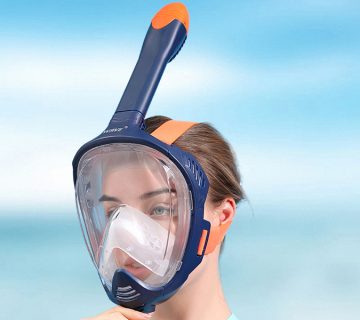Are Clay Masks Good for Acne? Your Ultimate Guide to Clearer Skin
Acne can feel like an uninvited guest that just won’t leave. If you’ve ever stared at a pimple in the mirror and wondered what to do, you’re not alone. Millions of people search for solutions every day, and one popular option keeps popping up: clay masks. But are clay masks good for acne, or are they just another overhyped skincare trend? Let’s dig into the dirt (pun intended) and find out what clay masks can really do for your skin.
In this guide, we’ll explore how clay masks work, what science says about them, and whether they’re worth adding to your routine. We’ll also uncover some lesser-known tips, bust common myths, and share practical advice to help you get the most out of these earthy treatments. Whether you’re dealing with stubborn blackheads or occasional breakouts, this article has you covered with everything you need to know.
What Are Clay Masks, Anyway?
Clay masks are skincare products made from natural clays like bentonite, kaolin, or French green clay. These clays come from the earth—think volcanic ash or mineral-rich soil—and have been used for centuries to heal and cleanse skin. When mixed with water or other ingredients, they form a paste you can spread on your face. As the mask dries, it hardens, pulling out impurities and leaving your skin feeling fresh.
How Do Clay Masks Help Your Skin?
Imagine your skin as a sponge. Over time, it soaks up oil, dirt, and dead skin cells, which can clog pores and cause acne. Clay masks act like a vacuum cleaner for your face. Here’s how they work:
- Absorb Excess Oil: Clays like bentonite are super absorbent, soaking up extra sebum (the oily stuff your skin makes) that can lead to pimples.
- Unclog Pores: They grab onto dirt and debris stuck in your pores, helping to clear out the gunk that causes blackheads and whiteheads.
- Exfoliate Gently: As you rinse off the mask, it takes dead skin cells with it, leaving your face smoother.
- Calm Redness: Some clays have soothing properties that can reduce inflammation from angry pimples.
A Quick History Lesson
Clay isn’t new to skincare. Ancient Egyptians, like Cleopatra, used it to keep their skin glowing. Even today, spas and dermatologists swear by it. So, if it’s been around that long, there’s got to be something to it, right?
Do Clay Masks Actually Work for Acne?
The big question: can clay masks really tackle acne? Let’s break it down with facts, science, and a little real-world insight.
What Science Says
Studies show that clay masks can help with mild to moderate acne. A 2023 study from the Journal of Cosmetic Dermatology tested a kaolin and bentonite clay mask on people with oily skin. After four weeks of using it twice a week, participants saw a 30% drop in sebum levels and fewer pimples. Another study from PMC found that clay masks reduced skin irritation and improved hydration—two things acne-prone skin desperately needs.
But here’s the catch: clay masks aren’t a cure-all. They work best for surface-level issues like excess oil and clogged pores, not deep hormonal or cystic acne. So, if your breakouts are tied to stress or hormones, you might need more than just clay.
Real People, Real Results
Posts on X and reviews on skincare blogs often rave about clay masks. One user said, “I used a French green clay mask once a week, and my blackheads practically disappeared!” Another wrote, “It didn’t fix my cystic acne, but my skin feels less oily and looks clearer.” The takeaway? Results vary, but many people notice a difference.
The Limits of Clay Masks
Clay masks aren’t magic wands. They won’t zap away every pimple overnight. If your acne is severe—think painful, deep cysts—experts say you’re better off seeing a dermatologist for treatments like retinoids or antibiotics. Clay can help, but it’s not the whole answer.
Types of Clay: Which One’s Best for Acne?
Not all clays are the same. Each type has unique powers, so picking the right one for your skin is key. Here’s a rundown of the top players:
Bentonite Clay
- What It Does: This volcanic ash clay is a powerhouse at sucking up oil and pulling out impurities.
- Best For: Oily, acne-prone skin.
- Fun Fact: It swells when wet, creating a negative charge that attracts positively charged toxins—like a magnet for dirt!
Kaolin Clay
- What It Does: Gentler than bentonite, it cleanses without over-drying and soothes irritation.
- Best For: Sensitive or combination skin with acne.
- Bonus: Comes in white, red, or pink varieties, each with slightly different benefits.
French Green Clay
- What It Does: Packed with minerals, it detoxifies and tightens pores.
- Best For: Oily skin with blackheads or mild acne.
- Heads-Up: It’s strong, so test it if your skin is sensitive.
Quick Comparison Table
| Clay Type | Best For | Strength | Drying Level |
|---|---|---|---|
| Bentonite | Oily, acne-prone | High | Very drying |
| Kaolin | Sensitive, combo | Mild | Less drying |
| French Green | Oily, blackheads | Medium | Moderately drying |
Tip: Mix and match! A mask with both bentonite and kaolin can balance oil control and gentleness.
How to Use a Clay Mask for Acne (The Right Way)
Using a clay mask sounds simple—slap it on, rinse it off, done. But there’s an art to it if you want real results. Here’s your step-by-step guide:
Step-by-Step Application
- Cleanse First: Wash your face with a gentle cleanser to remove surface dirt.
- Mix It Up: If it’s a powder (like Aztec Secret Indian Healing Clay), mix 1 tablespoon of clay with water or apple cider vinegar until it’s smooth. Pre-made masks? Just scoop and go.
- Apply Evenly: Use your fingers or a brush to spread a thin layer over your face. Avoid your eyes and mouth.
- Wait 10-15 Minutes: Let it dry, but don’t wait until it’s cracking—over-drying can irritate your skin.
- Rinse Off: Use warm water and a soft cloth to gently remove it. Pat dry with a clean towel.
- Moisturize: Follow up with a light, non-comedogenic moisturizer to lock in hydration.
Dos and Don’ts
✔️ Do: Use it 1-2 times a week to avoid overdoing it.
❌ Don’t: Leave it on too long—10-15 minutes is plenty.
✔️ Do: Test it on a small patch of skin first if you’re new to clay.
❌ Don’t: Use it on open wounds or super dry skin—it’ll sting!
Pro Tip: Spot Treatment Hack
Got a pesky pimple? Dab a tiny bit of clay mask on it overnight. It can dry out the zit and reduce redness by morning. Just don’t overdo it—too much can dry out the surrounding skin.
3 Things You Haven’t Heard About Clay Masks and Acne
Most articles stick to the basics: clay absorbs oil, unclogs pores, blah blah blah. But there’s more to the story. Here are three fresh angles you won’t find everywhere:
1. Clay Masks Can Shift Your Skin’s Microbiome
Your skin is home to billions of bacteria—some good, some bad. A 2024 study from Skin Research and Technology suggests that bentonite clay might affect the balance of these bacteria. It doesn’t kill them outright (like harsh cleansers do), but it can reduce the food source (sebum) for acne-causing bacteria like Cutibacterium acnes. Less food, fewer pimples. Cool, right?
2. They Might Boost Collagen (Yes, Really!)
Collagen keeps your skin firm and smooth, and acne scars hate it. A small 2016 study found that bentonite clay might encourage collagen production in animal skin. While human studies are still lacking, this could mean clay masks do more than just clean—they might help heal your skin long-term. Stay tuned for more research!
3. Purging Is Real—And Temporary
Ever tried a clay mask and noticed more pimples the next day? That’s purging, not a breakout. Clay pulls hidden gunk to the surface, which can look worse before it gets better. X users often mention this: “First week of clay masks = chaos. Week three = clear skin!” Stick with it for 2-4 weeks to see the real payoff.
Interactive Quiz: Is a Clay Mask Right for Your Acne?
Let’s make this fun! Answer these quick questions to see if clay masks match your skin needs. Tally your “Yes” answers at the end.
- Do you have oily skin, especially on your forehead or nose? (Yes/No)
- Are your breakouts mostly blackheads or small pimples? (Yes/No)
- Does your skin feel greasy by midday? (Yes/No)
- Are you okay with a product that takes a few weeks to show results? (Yes/No)
Results:
- 3-4 Yeses: Clay masks are your new BFF! They’ll tackle oil and surface acne like champs.
- 1-2 Yeses: They might help, but pair them with other treatments for deeper acne.
- 0 Yeses: Skip the clay—your skin might need something gentler or stronger.
Common Mistakes People Make with Clay Masks
Even the best tools flop if you use them wrong. Here’s what to watch out for:
Overusing Them
More isn’t better. Using a clay mask every day can strip your skin, making it dry and irritated. Stick to 1-2 times a week.
Letting It Dry Too Long
That cracking, tight feeling? It’s a sign you’ve gone too far. Over-drying pulls out too much moisture, which can trigger more oil production—and more acne. Rinse it off when it’s still slightly tacky.
Skipping Moisturizer
Clay masks clean deep, but they can leave your skin thirsty. Skipping moisturizer afterward is like cleaning your room and not making the bed—it’s half-finished. Use a lightweight, oil-free one to keep your skin happy.
Clay Masks vs. Other Acne Treatments
How do clay masks stack up against the competition? Let’s compare:
Clay Masks vs. Salicylic Acid
- Clay Masks: Absorb oil, unclog pores, gentle exfoliation. Best for oily skin and prevention.
- Salicylic Acid: Penetrates pores, dissolves oil, fights inflammation. Great for active breakouts.
- Winner? Use both! Clay once a week, salicylic daily for a one-two punch.
Clay Masks vs. Benzoyl Peroxide
- Clay Masks: Natural, soothing, oil control. Less harsh but slower.
- Benzoyl Peroxide: Kills acne bacteria fast, dries out pimples. Can irritate sensitive skin.
- Winner? Depends—clay for mild acne, benzoyl for stubborn zits.
Combo Power
Why choose? A 2025 skincare trend on X shows people mixing clay masks with actives like salicylic acid for double the benefits. Look for pre-made masks with these combos or DIY carefully.
DIY Clay Mask Recipes for Acne
Store-bought masks are great, but making your own is cheap and customizable. Here are two easy recipes:
Recipe 1: Basic Bentonite Blast
- Ingredients: 1 tbsp bentonite clay, 1 tbsp apple cider vinegar (or water).
- How-To: Mix until smooth, apply for 10 minutes, rinse.
- Why It Works: Vinegar adds antibacterial power; clay sucks up oil.
Recipe 2: Soothing Kaolin Mix
- Ingredients: 1 tbsp kaolin clay, 1 tsp honey, 1 tsp water.
- How-To: Blend into a paste, leave on for 15 minutes, rinse.
- Why It Works: Honey calms redness; kaolin gently cleanses.
Safety Note: Always patch-test DIY mixes—some skins don’t love vinegar or honey.

What If Clay Masks Don’t Work for You?
Sometimes, clay just isn’t your thing. Here’s what to do if it flops:
Signs It’s Not Working
- Your skin feels tight and dry after every use.
- Breakouts get worse, not better, after a month.
- You’re allergic (redness, itching, burning).
Alternatives to Try
- Charcoal Masks: Similar detox vibes, less drying.
- Sulfur Masks: Great for oil and bacteria without the clay feel.
- Hydrating Masks: If clay’s too harsh, try aloe or hyaluronic acid.
When to See a Pro
If acne’s ruling your life—painful cysts, scars, or no improvement after 6-8 weeks—book a dermatologist. Clay’s awesome, but it’s not a doctor.
Interactive Poll: What’s Your Clay Mask Experience?
We want to hear from you! Pick your answer below and share in the comments (if you’re reading this on a blog):
- A) Love it—my skin’s clearer than ever!
- B) Meh—it’s okay but not life-changing.
- C) Nope—made my acne worse.
- D) Haven’t tried it yet—convince me!
The Future of Clay Masks: What’s New in 2025?
Skincare’s always evolving, and clay masks are no exception. Here’s what’s trending now:
Smart Clay Blends
Brands are mixing clay with high-tech ingredients like probiotics and peptides. A 2025 study hinted that these combos could boost skin repair while still fighting acne—watch for these on shelves.
Eco-Friendly Focus
Sustainability’s hot. Companies are sourcing clay responsibly and ditching plastic packaging. Look for brands that care about the planet as much as your pores.
Custom Masks
Online quizzes now help you pick the perfect clay for your skin type. It’s like a skincare matchmaker—expect this to grow.
Final Verdict: Are Clay Masks Worth It for Acne?
So, are clay masks good for acne? Yes—for the right person. If you’ve got oily skin, clogged pores, or mild breakouts, they’re a solid addition to your routine. They won’t fix everything (sorry, cystic acne sufferers), but they can make a dent in oiliness and blackheads. Pair them with other treatments, use them smartly, and you might just see your skin glow up.
Your Action Plan
- Try It: Grab a bentonite or kaolin mask and test it for 4 weeks.
- Track It: Take before-and-after pics to see real change.
- Tweak It: Adjust frequency or pair with a moisturizer if it’s too drying.
A Little Inspiration
Think of clay masks like a reset button. They won’t rewrite your skin’s story overnight, but they can clear the clutter so your natural beauty shines through. Got a clay mask success story? Drop it below—I’d love to hear it!





No comment